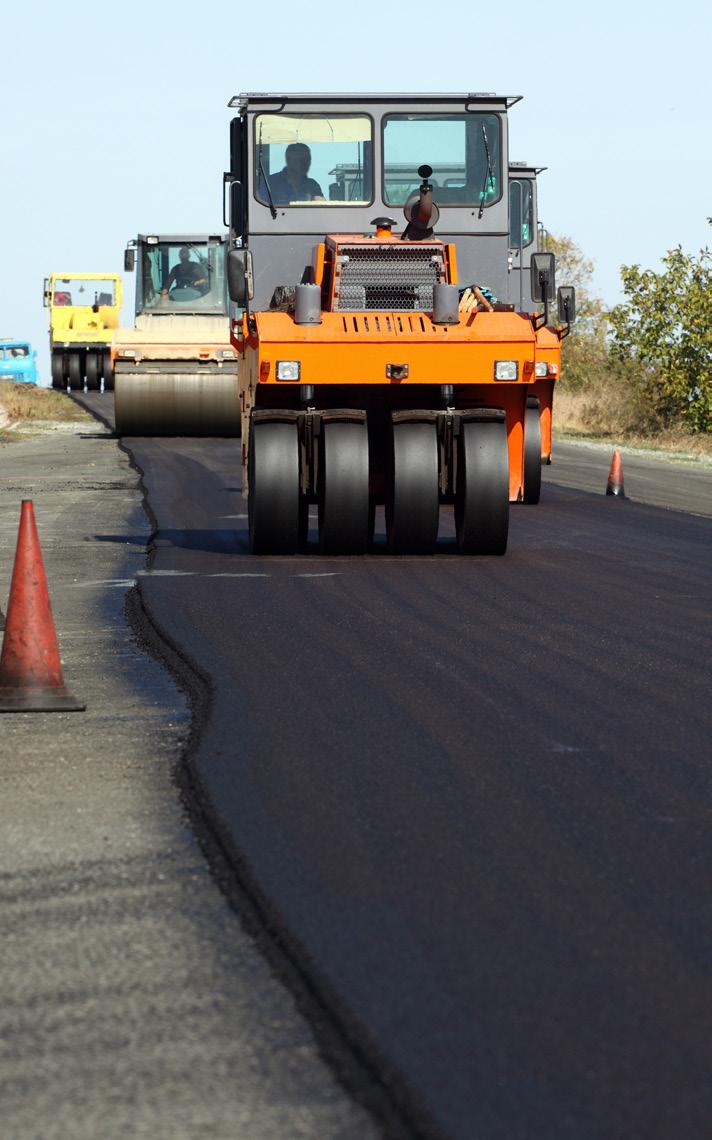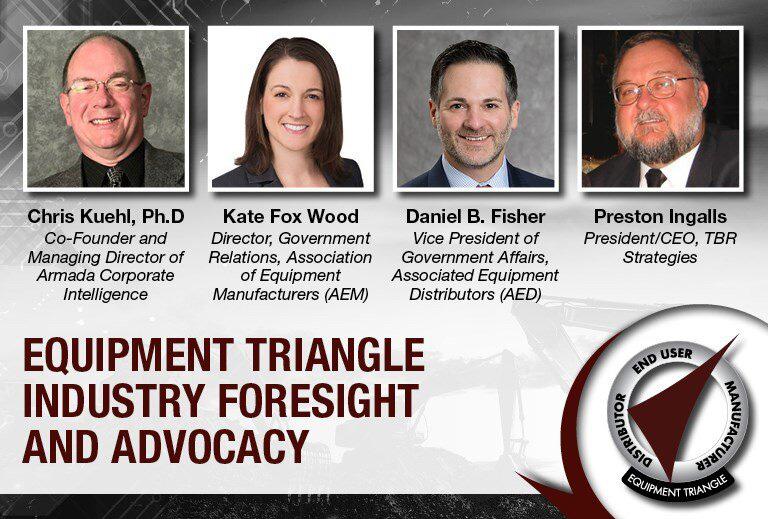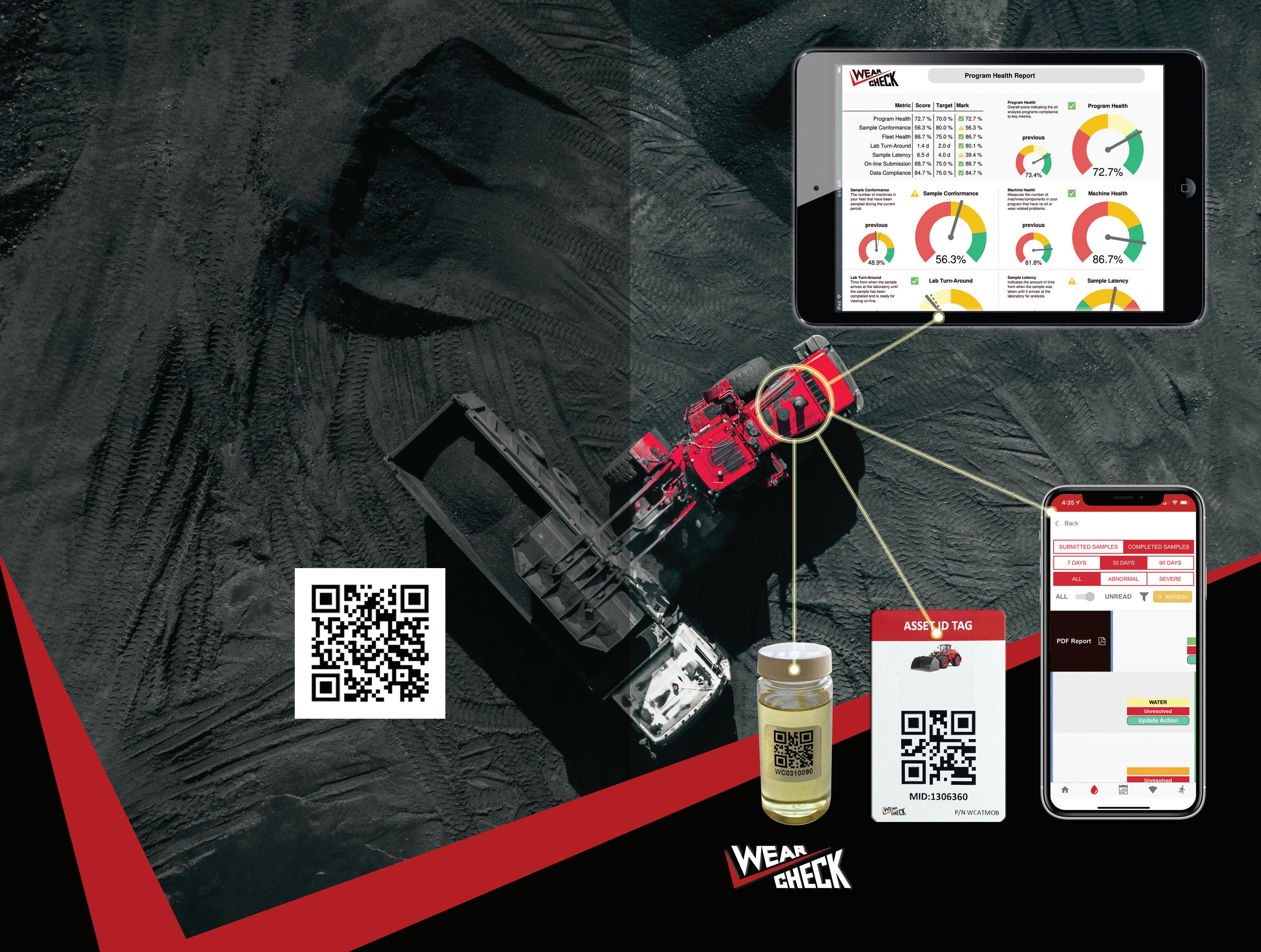
7 minute read
AEMP Equipment Management LIVE Highlights Infrastructure - Capitol Hill, the White House & Beyond
How is COVID-19 affecting infrastructure projects and the technician shortage?
BY GEORGIA KRAUSE
©KROPIC – STOCK.ADOBE.COM
Because so much of the fleet management industry is dedicated to building and maintaining our country’s infrastructure, AEMP asked the best experts on heavy equipment and government infrastructure to share their insights and updates on how COVID-19 is affecting the already complicated task of funding and activating current and upcoming infrastructure projects.
Daniel Fisher, VP of Government Affairs, AED, and Kate Fox Wood, Director Government Relations, AEM, spoke at the Equipment Triangle Industry Foresight and Advocacy session during June’s Equipment Management LIVE online event.
Shortly after last year’s CONEXPO, when COVID-19’s impact began commanding the attention of equipment manufacturers and distributors, AEM did two online surveys asking member CEOs ©WORLD TRAVEL PHOTOS – STOCK.ADOBE.COM what their concerns were and what their company’s outlook was for the year.
Wood reported those surveyed said the impact of the virus was severe and required making adjustments. “Over one-third of our members furloughed up to half of their employees,” Wood said. “Our CEOs also said supply chain issues and order cancellations and delays continue to be a challenge.” Wood noted that a full 80 percent of the survey respondents say infrastructure investment is the “key to getting our industry back online.”
Fisher reported that despite shutdown orders, dealers have been able to remain


©MIKHAIL LEONOV – STOCK.ADOBE.COM

open to service customers. However, while the public infrastructure projects were continuing into May, Fisher said the state DOTs have begun to cut back on their projects. “Unlike the equipment manufacturers, the distributors don’t see a lot of optimism right now as the backlog of projects begins to run down. There is not a lot in the pipeline right now. State DOTs and local governments are saying they just don’t have the revenue due to the lack of overall economic activity to fund projects and other services.”

These speakers share their insights into some of the industy’s main concerns.
Fisher said the the COVID-19 relief packages, such as the FFCRA and Paycheck Protection Program have helped in the short term, but Fisher and Wood agreed that the uncertainty caused by both the continuing COVID-19 situation may bring and the upcoming expiration of the current FAST Act (Fixing America’s Surface Transportation Act, a $309 billion bill set to expire September 30, 2020) highway bill is causing concern. “You can’t underestimate the importance of certainty in this industry,” Wood said.
That said, Wood sees something of a silver lining in the pandemic / highway bill situation because Congress is making infrastructure a hot topic again.
Last summer the Senate began work on their America’s Transportation Infrastructure Act of 2019 (ATIA,), a five-year, $287 billion bill that would be a 27% increase over the FAST Act. In June, the House began work on its INVEST in America Act, which would provide $494 billion over five years and features an $83 billion COVID-19 package for fiscal year 2021 designed to help local and state projects. On July 1, 2020, the House passed the bill and sent it to the Senate. In addition, the White House reportedly is preparing a $1 trillion infrastructure package that would in part reauthorize the FAST Act for another 10 years and target 5G build outs. Woods says the bipartisan support for the infrastructure bills is encouraging. Fisher anticipates another stimulus package.
BE CAREFUL WHAT YOU WISH FOR — THE INFRASTRUCTURE BILL & REALITY
The second half of the session featured Preston Ingalls, President and CEO of TBR Strategies, who raised an interesting caution regarding counting on new infrastructure legislation and funding to lead the country out of the COVID-19 economic downturn.
The underlying problem, as Ingalls sees it, is that even with adequate and timely funding for infrastructure projects there will not be enough people to support the work that needs to be done.
The diesel heavy equipment technician shortage has grown dire. In fact, Detroit Diesel has estimated 50 percent of current diesel mechanics will retire in the next five years. “The CAPEX will be available, but the output of new equipment may not necessarily keep pace with demand. Nor will the availability of a skilled workforce,” Ingalls said. Our industry is going to be short 142,000 trained workers.
Ingalls says fewer technicians are going into the profession for reasons such as poor

connotation of the ‘grease monkey’ moniker and wages that have not kept up with other attainable non-college degree careers.
Here’s his math: According to the Bureau of Labor Statistics (BLS), the construction and trucking industry will need to recruit 67,000 new technicians by 2022 just to meet demand and replace retiring Baby Boomers. This number does not include the more than 75,000 new diesel engine specialists that the BLS anticipates will also be needed by then. It does not include any expansion staffing based on the anticipated infrastructure stimulus package.
Ingalls says the technician shortage will affect fleet managers by causing: ❯ Bidding wars for a limited pool of resources ❯ Unskilled personnel performing work and longer times for repair events due to the lack of adequate skills and knowledge ❯ Safety issues from inexperienced or over-worked mechanics servicing equipment ❯ Increased labor cost from overtime, higher pay, more attractive benefits to attract and retain
Lower morale and increased turnover from overworked mechanics doing the work of several people
To keep and recruit equipment technicians to meet the infrastructure challenge, Ingalls offered a list of 10 Things We Can Do to Keep the Ones You Have. ❯ Take a look at your hiring and retention practices. The most important decision about the right fit is before you hire. Hire slow — fire fast. Construction industry average employee turnover rate is 21% — is yours too high? ❯ Make sure you are paying in the top quartile if you want to keep them. Just as we look around to find out what other companies are paying for similar jobs,
they do, too. ❯ Examine your benefits. Are they competitive or just fair? Benefits have a financial value. Have you shared that value with your folks? Do they know? ❯ Are your folks clear on the vision of the company? Do they clearly understand their roles and responsibilities and their linkage to that vision? If not — why not? ❯ Keep ‘em happy! Use the Gallop Poll’s
Q12 questions to find out if your folks are happy in their jobs. It is the most used instrument for examining employee attitudes and job satisfaction ❯ Provide a robust training program. I recently heard a manager ask “Why train them for our competition? They are just going to be recruited.” It goes back to the old saying, “What if you train them and they leave...but worst, what if you don’t and they stay?” If you think training is expensive...try ignorance ❯ Make sure the rewards are appropriate for the job. Stop rewarding for wrong behavior (overtime for breakdowns); reward the right behavior (goal attainment, increased uptime, pay-forskills, pay-for-performance, etc.). ❯ Reward for progression with specific knowledge and skill attainments. We should not only re-establish Apprentice,
Journeyman, and Master career paths but pay bonuses to Master’s who recruit apprentices and extra bonus when they become a Journeyman. Provide for Payfor-skill programs. ❯ Make sure their supervisor is trained in leading people. It goes back to the old saying, “People don’t leave their job, they leave their boss.” ❯ Meet with your techs. Ask how they are doing. What issues are they facing?
Provide praise for their work. Show you care as it can make a real difference in how they perceive the job.
LESS MORE DIGGING PUSHING














Spendlesstimediggingfortheanswers inyouroilanalysisdata. WearCheckties intoyourtelemetrysystemtoprovide a seamlesssamplingsolutionculminating withsubscription-basedmanagement reportsthatpushyouthedatayouneed tomaximizefleetutilization.Contactus todatodaytoseehowWearCheck differentiatesthemselvesfromthe competitiontoprovideyouthemost efficient,andleastcomplicatedoil analysisserviceinNorthAmerica.










